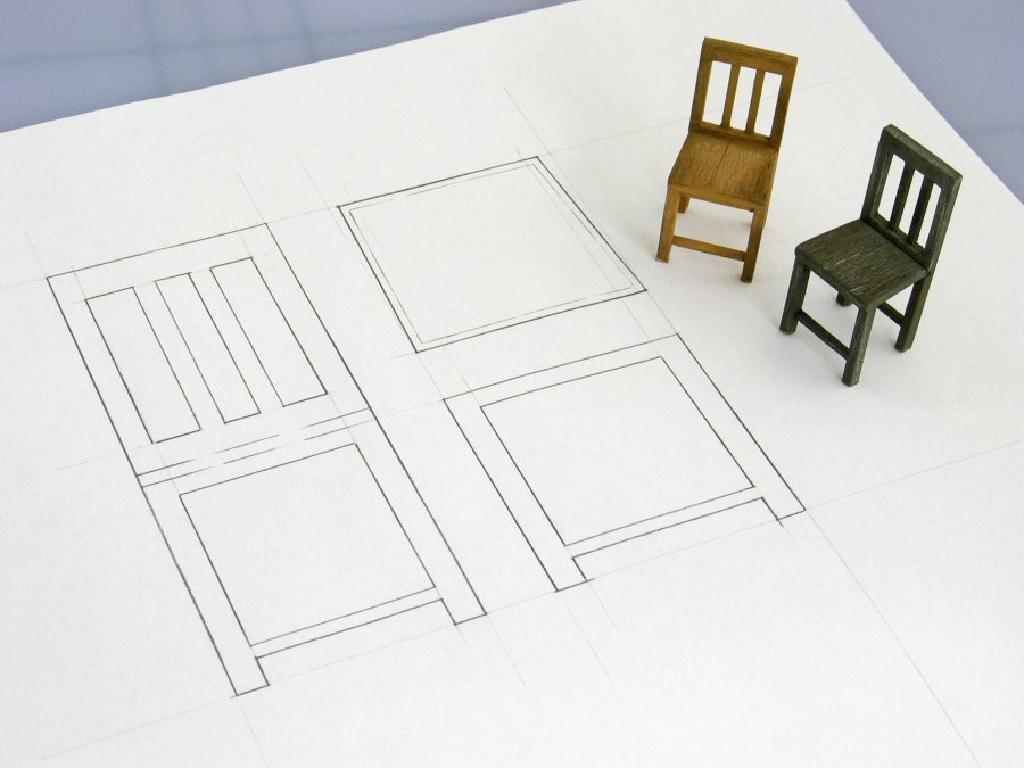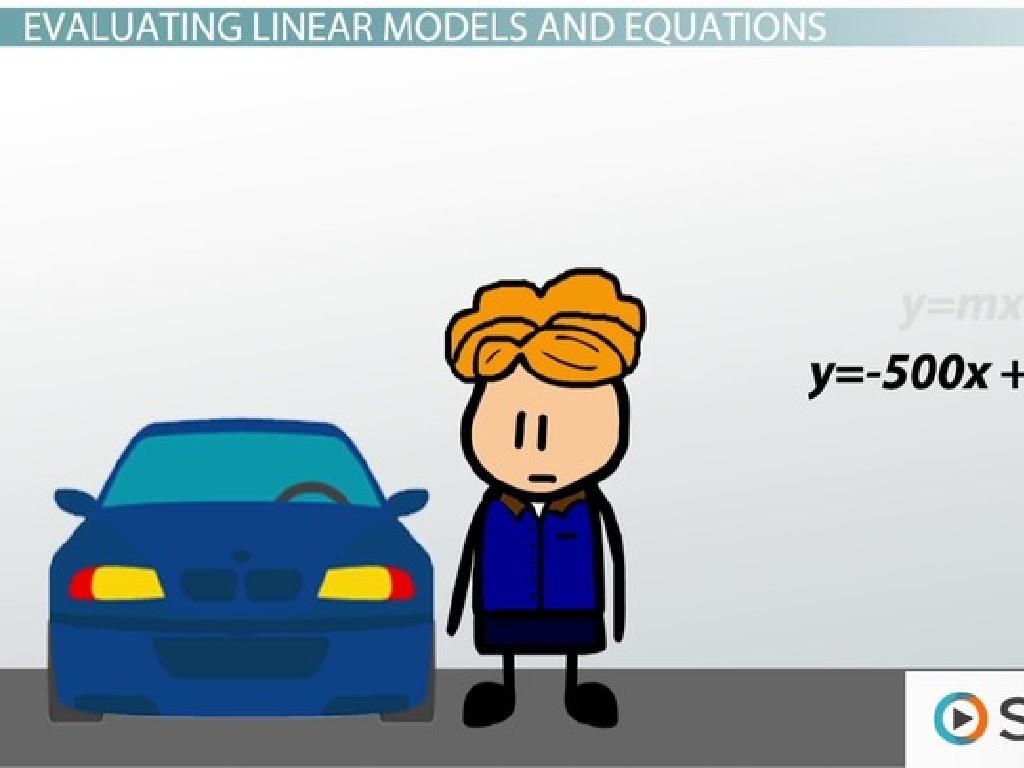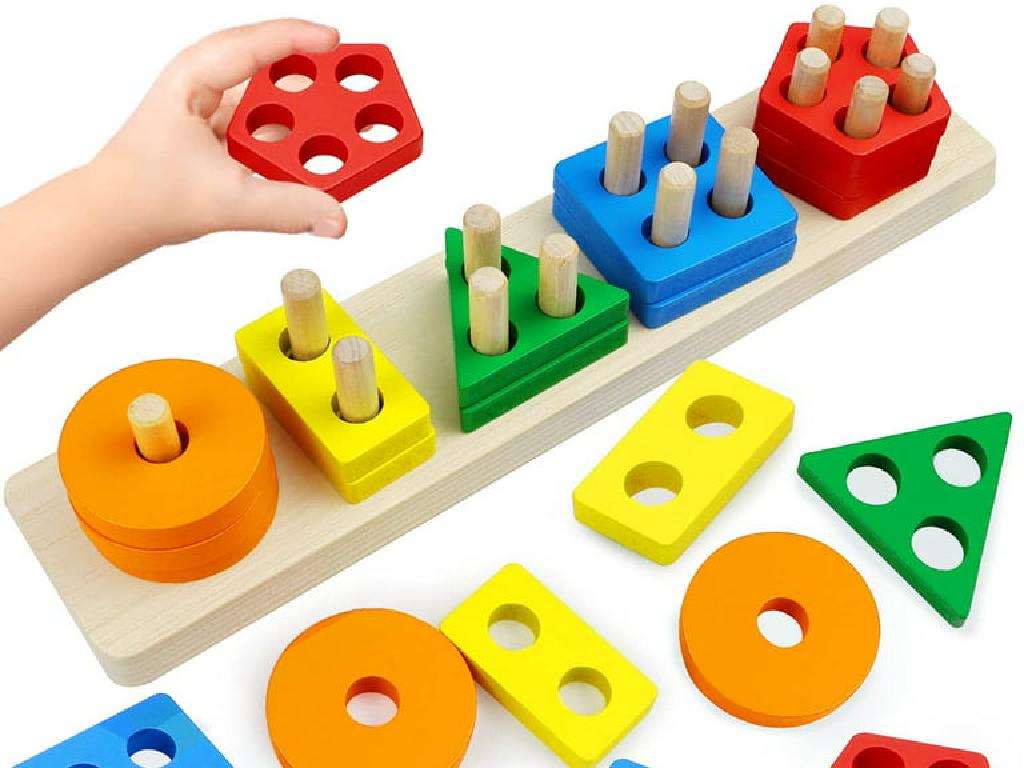Identify Shapes Traced From Solids
Subject: Math
Grade: Pre-k
Topic: Solid Shapes
Please LOG IN to download the presentation. Access is available to registered users only.
View More Content
Welcome to Solid Shapes!
– Greet the class: Good morning!
– Today’s topic: Solid shapes
– Identify classroom objects
– Look around and think of shapes
– Relate objects to solid shapes
– Match items with cube, sphere, etc.
|
Begin the class with a warm and enthusiastic greeting to set a positive tone. Introduce the concept of solid shapes, ensuring to keep the language simple and age-appropriate for Pre-K students. Encourage the children to observe their surroundings and name various objects they see in the classroom. Guide them to relate these objects to solid shapes like cubes, spheres, cylinders, etc. This activity will help them connect the abstract concept of solid shapes to tangible items they interact with daily, enhancing their understanding and retention. Prepare to assist them in drawing parallels between everyday items and geometric shapes, fostering an interactive and engaging learning environment.
Exploring Solid Shapes
– Solid shapes are 3D objects
– Like blocks, balls, and party hats
– They have 3 dimensions
– Length, width, and height
– Examples: cube, sphere, cone
– Cube is like a dice, sphere is like a ball, cone is like an ice cream cone
– Recognizing shapes in objects
|
Introduce the concept of solid shapes by explaining that unlike flat shapes, solid shapes have three dimensions. Use tangible examples like a dice for a cube, a ball for a sphere, and an ice cream cone for a cone to help students visualize. Encourage them to touch and hold different objects to understand the concept of 3D. Discuss how we can find these shapes in everyday objects and ask the students to bring examples from home. This will help them to connect the idea of solid shapes with their real-world environment, enhancing their learning experience.
Identifying Shapes Around Us
– Find solid shapes in our room
– Spot cubes, spheres, and cones
– Like blocks (cube), balls (sphere), party hats (cone)
– Trace shapes to see outlines
– Use paper to trace and reveal 2D shapes
– Recognize shapes in everyday objects
– Understand solids have 2D shapes too
|
This slide is aimed at helping Pre-K students recognize and identify solid shapes in their immediate environment. Encourage the students to look around the classroom and find objects that resemble a cube, sphere, or cone. Explain that these are all solid shapes and can be found in many places. Have them trace these objects on paper to see the flat shapes they make, like a square from a cube or a circle from a sphere. This activity will help them understand the concept of two-dimensional shapes being part of three-dimensional objects. Provide guidance on how to trace objects safely and correctly. Prepare to have a variety of objects available in the classroom for students to explore and trace.
Tracing Our Shapes: Exploring Solids
– Trace solids’ bases on paper
– Discover the shape of a cube’s base
– A cube’s base is a square. Can you trace it?
– Embrace imperfect tracings
– Practice makes perfect. Keep trying!
– Learning is fun and exploratory
|
This slide is designed for a hands-on activity where Pre-K students will learn about solid shapes by tracing their bases on paper. Provide a variety of solid shapes like cubes, cylinders, and spheres for the students to trace. Emphasize that the goal is to explore and understand the shapes, not to create perfect tracings. Encourage the students to guess the shape before tracing and see if they were right. Remind them that making mistakes is a natural part of learning. This activity will help develop their motor skills as well as their understanding of geometric shapes. Prepare to assist them with holding the solids steady and tracing around them. Celebrate all attempts and discoveries.
Shape Matching Game
– Match solids to their tracings
– Recognize the bottom shape of solids
– Is the bottom a circle, square, or triangle?
– Understand 3D shapes on 2D surfaces
– A cube’s bottom looks like a square on paper
– Have fun with shape puzzles
|
This interactive game is designed to help Pre-K students identify the 2D shapes that are traced from 3D solids. Provide various solid objects and their corresponding shape tracings on paper. Encourage the children to match each solid with its tracing, reinforcing their understanding of how a 3D shape can appear as a 2D figure. Discuss the different shapes they see and how they relate to the bottom of each solid object. This activity will not only help with shape recognition but also with spatial reasoning as they begin to connect 3D objects to 2D representations. Possible activities include matching wooden blocks to drawn shapes, using playdough to press and create shape imprints, or tracing the bottom of various containers to match with their shapes.
Class Activity: Shape Hunt!
– Let’s search for shapes in class
– Trace the bottom of an object
– Use crayons or pencils for tracing
– Show your tracing to everyone
– We’ll guess the solid shape
– Is it a circle, square, or triangle?
|
This activity is designed to help Pre-K students identify and understand solid shapes through a fun and interactive shape hunt. Encourage the children to explore the classroom and select various objects to trace. Provide them with paper and crayons or pencils for tracing. Once they have traced the bottom of their chosen object, have them present their tracing to the class. The rest of the students will then guess which solid shape corresponds to the tracing. This activity not only reinforces shape recognition but also develops fine motor skills and peer learning. Possible objects for tracing include the bottom of a can (circle), a block (square), or a pyramid toy (triangle). Ensure that each child gets a turn and receives positive feedback for their effort.
Review and Goodbye: Solid Shapes
– Recap: Learning about solids
– Shapes in our world
– Solids are all around us, like cubes, spheres, and cones.
– Find shapes at home
– Look for solid shapes in your house, like a ball (sphere) or a box (cube).
– Celebrate and see you soon!
|
As we conclude today’s lesson, we’ll review the key points about solid shapes that we’ve learned. Encourage the children to reflect on how shapes form the building blocks of many objects in our environment. Prompt them to continue their learning journey at home by identifying solid shapes in their surroundings, which will help reinforce their understanding. Praise their efforts and participation to boost their confidence. Let them know you’re excited to see them in the next class and to hear about the shapes they’ve discovered at home.

/postwar_america_transformation.jpg)




